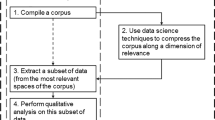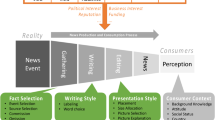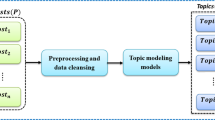Abstract
Social media have ushered in alternative modalities to propagate news and developments rapidly. Just as traditional IR matured to modeling storylines from search results, we are now at a point to study how stories organize and evolve in additional mediums such as Twitter, a new frontier for intelligence analysis. This study takes as input news articles as well as social media feeds and extracts and connects entities into interesting storylines not explicitly stated in the underlying data. First, it proposes a novel method of spatio-temporal analysis on induced concept graphs that models storylines propagating through spatial regions in a time sequence. Second, it describes a method to control search space complexity by providing regions of exploration. And third, it describes ConceptRank as a ranking strategy that differentiates strongly-typed connections from weakly-bound ones. Extensive experiments on the Boston Marathon Bombings of April 15, 2013 as well as socio-political and medical events in Latin America, the Middle East, and the United States demonstrate storytelling’s high application potential, showcasing its use in event summarization and association analysis that identifies events before they hit the newswire.














Similar content being viewed by others
Notes
In the real world, it is possible another news source may have published this event even earlier. However, only the sources contained in the input files are considered here.
References
Brin S, Page L (1998) The anatomy of a large-scale hypertextual web search engine. Computer Networks and ISDN Systems 30:107–117
Chakrabarti D, Punera K (2011) Event summarization using tweets. In: Proceedings 6th AAAI international conference on weblogs and social media
Das D, Martins A (2007), A survey on automatic text summarization
Dawn (2009) Drug abuse warning network - u.s. dept of health and human services - inter-university consortium for political and social research ann arbor. mi - http://www.samhsa.gov/data/
Gong Y, Liu X (2001) Generic text summarization using relevance measure and latent semantic analysis. In: 24th international ACM SIGIR conference on research and development in information retrieval, pp 19–25
Groh G, Straub F, Koster B (2012) Spatio-temporal small worlds for decentralized information retrieval in social networking. In: ACM GIS’12, pp 418–421
Hossain MS, Andrews C, Ramakrishnan N, North C (2011) Helping intelligence analysts make connections. In: Workshop on scalable integration of analytics and visualization, AAAI ’11, pp 22–31
Hossain MS, Butler P, Ramakrishnan N, Boedihardjo A (2012) Stortytelling in entity networks to support intelligence analysts. In: Conference on knowledge discovery and data mining (KDD’12), pp 1375–1383
Hossain MS, Gresock J, Edmonds Y, Helm R, Potts M, Ramakrishnan N (2012) Connecting the dots between pubmed abstracts. Public Libr Sci (PLoS ONE) 7(1)
Iarpa - open source indicators program (osi) (2014). http://www.iarpa.gov/solicitations_osi.html
Kumar D, Ramakrishnan N, Helm RF, Potts M (2008) Algorithms for storytelling. IEEE TKDE 20(6):736–751
Leetaru K, Schrodt P (2013) Gdelt: global database of events, language, and tone, 1979–2014. In: Proceedings intl. studies assoc. annual conference (ISA)
Li C, Sun A, Datta A (2012) Twevent: segment-based event detection from tweets. In: Conference on information and knowledge management, pp 155–164
Li R, Lei KH, Khadiwala R, Chang K (2012) Tedas: a twitter-based event detection and analysis system. In: Proceedings 28th IEEE conference on data engineering (ICDE), pp 1273–1276
Li Z, Wang B, Li M, Ma WY (2005) A probabilistic model for retrospective news event detection. In: ACM SIGIR conference on research and development in information retrieval, SIGIR ’05, pp 106–113
Lin D (2008) An information-theoretic definition of similarity. In: ICML ’08, pp 296–304
http://hadoop.apache.org/ (2015)
Marcus A, Bernstein M, Badar O, Karger D, Madden S, Miller R (2011) Twitinfo: aggregating and visualizing microblogs for event exploration. In: ACM conference on human factors in computing systems (CHI)
Medvet E, Bartoli A (2012) Brand-related events detection, classification and summarization on twitter. In: Proceedings of the the 2012 IEEE/WIC/ACM international joint conferences on web intelligence and intelligent agent technology, WI-IAT ’12, pp 297–302
Nenkova A, McKeown K (2011) Automatic summarization. Foundations and Trends in Information Retrieval 5(2):103–233
Petrovic S, Osborne M, McCreadie R, Macdonald C, Ounis I, Shrimpton L (2013) Can twitter replace newswire for breaking news?. In: 7th international AAAI conference on weblogs and social media (ICWSM)
Radinsky K, Horvitz E (2013) Mining the web to predict future events. In: WSDM ’13, pp 255–264
Ramakrishnan N, Kumar D, Mishra B, Potts M, Helm RF (2004) Turning cartwheels: an alternating algorithm for mining redescriptions. In: KDD ’04, pp 266–275
Reed T, Gubbins K (1973) Applied statistical mechanics: thermodynamic and transport properties of fluids. Butterworth-Heinemann, Boston
Sakaki T, Okazaki M, Matsuo Y (2010) Earthquake shakes twitter users: Real-time event detection by social sensors. In: Proceedings of the 19th international conference on world wide web, WWW ’10, pp 851–860
Shahaf D, Guestrin C (2010) Connecting the dots between news articles. In: ACM conf. on knowledge, discovery, and data mining (KDD ’10), pp 745–770
Shahaf D, Guestrin C, Horvitz E (2012) Metro maps of science. In: Conference on knowledge discovery and data mining, KDD’12, pp 1122–1130
Shahaf D, Guestrin C, Horvitz E (2012) Trains of thought: generating information maps. In: World wide web conference, WWW’12, pp 899–908
http://www.alchemyapi.com/ (2013)
(2015). trec.nist.gov/data/kba.html/
Turner S (1994) The creative process: a computer model of storytelling and creativity. Psychology Press, pp 122–123
Vavliakis KN, Symeonidis AL, Mitkas PA (2013) Event identification in web social media through named entity recognition and topic modeling. Data Knowl Eng 88:1–24
Walther M, Kaisser M (2013) Geo-spatial event detection in the twitter stream. In: Advances in information retrieval, Lecture notes in computer science, vol 7814. Springer, Berlin Heidelberg, pp 356–367
(2013). http://wordnet.princeton.edu/
Author information
Authors and Affiliations
Corresponding author
Rights and permissions
About this article
Cite this article
Dos Santos, R.F., Shah, S., Boedihardjo, A. et al. A framework for intelligence analysis using spatio-temporal storytelling. Geoinformatica 20, 285–326 (2016). https://doi.org/10.1007/s10707-015-0236-8
Received:
Revised:
Accepted:
Published:
Issue Date:
DOI: https://doi.org/10.1007/s10707-015-0236-8




